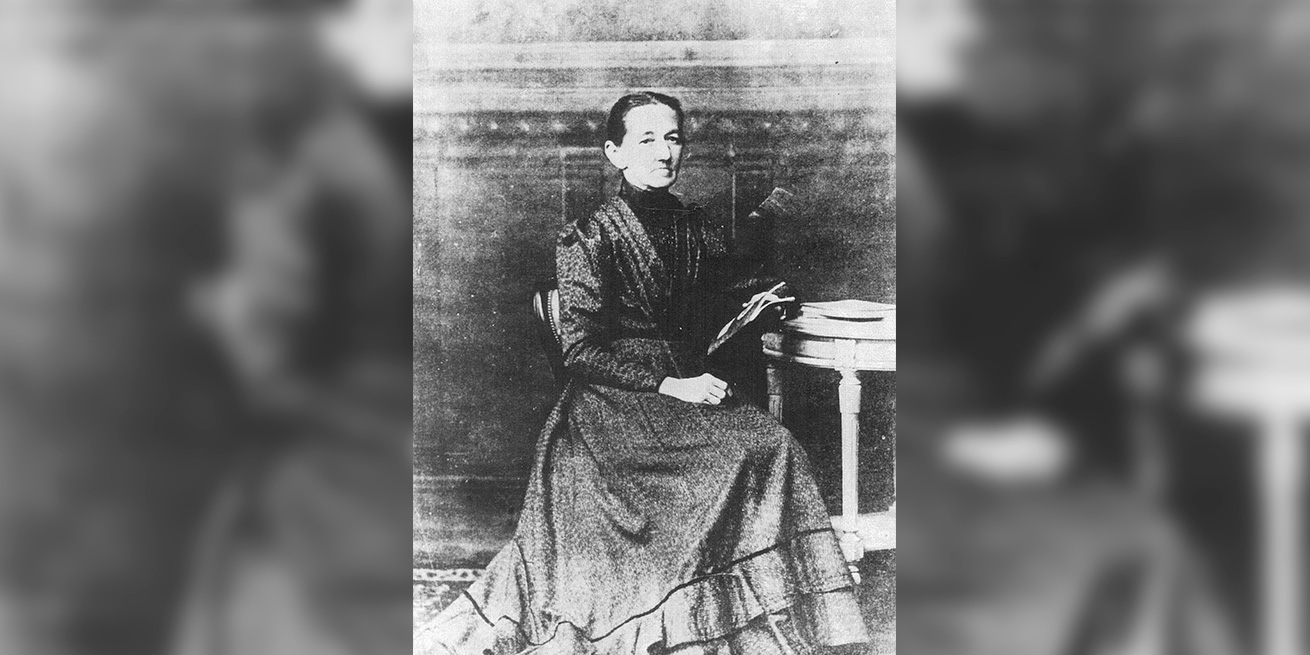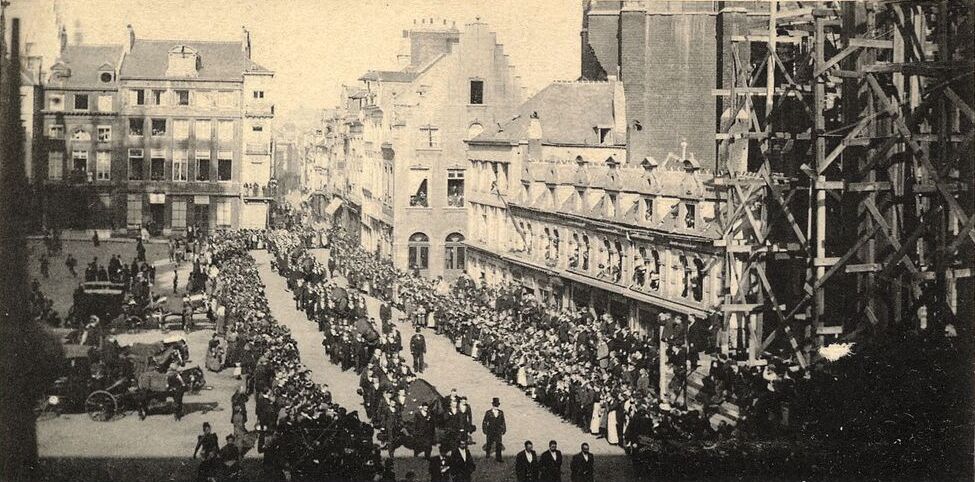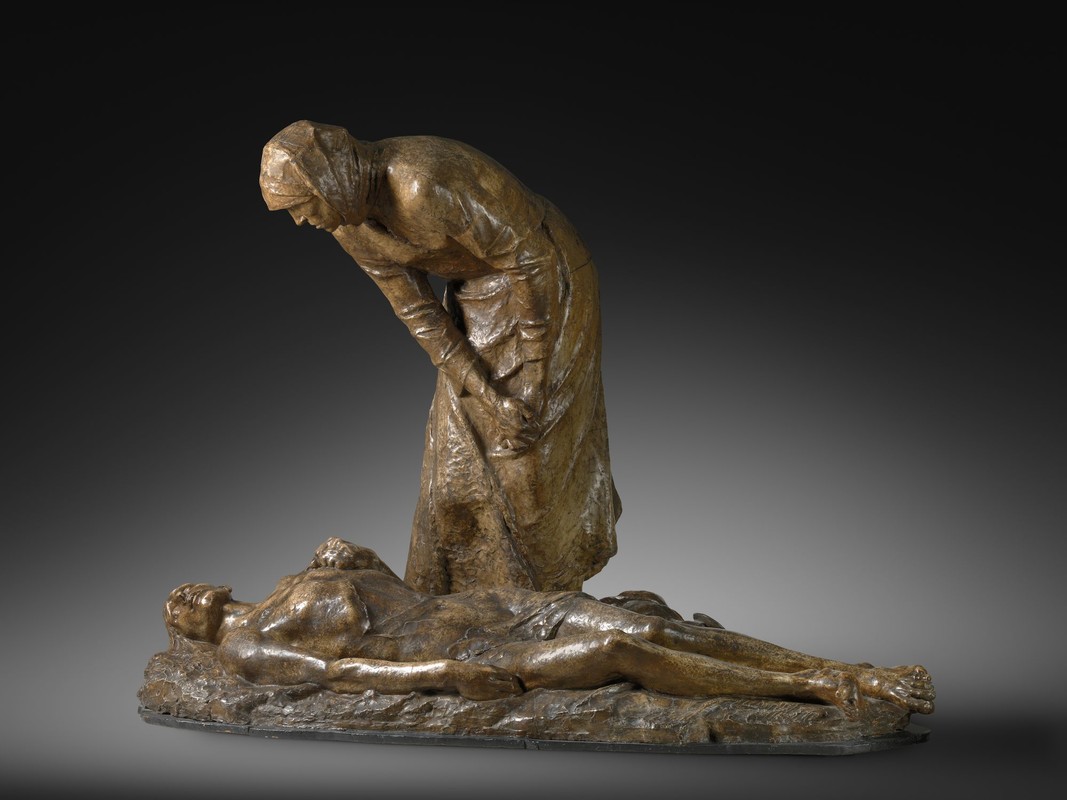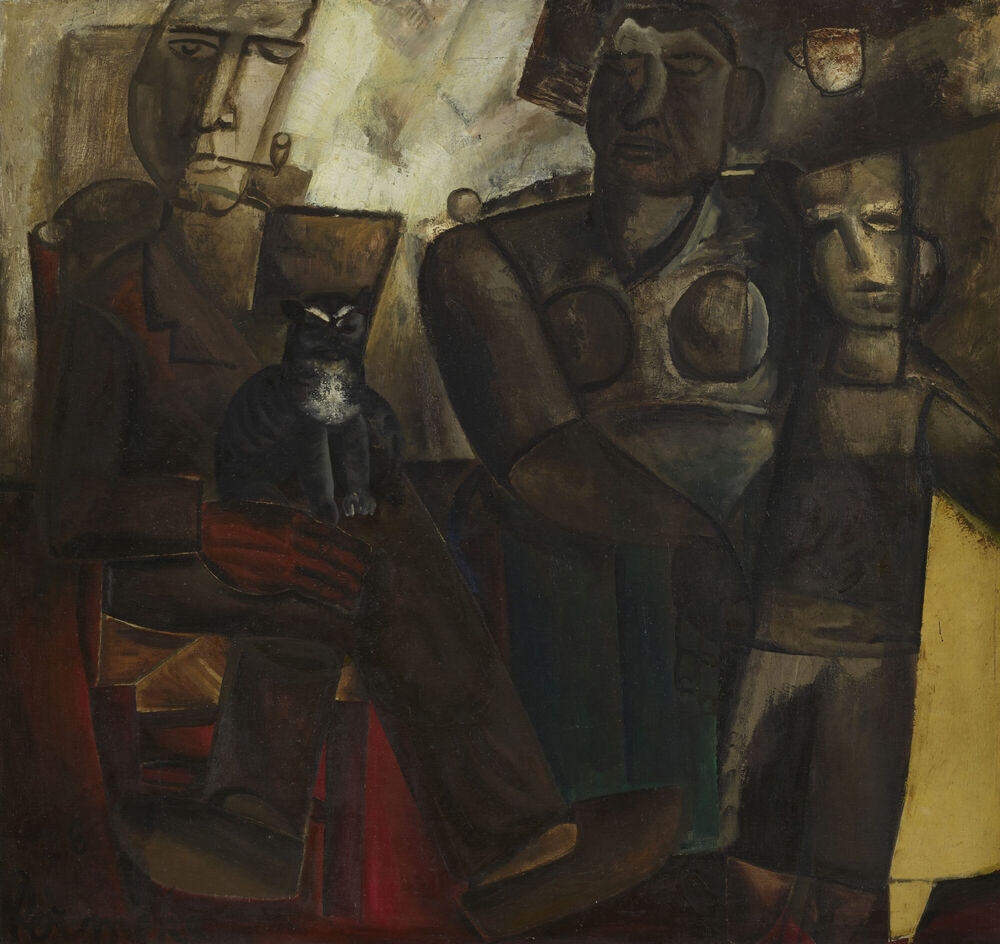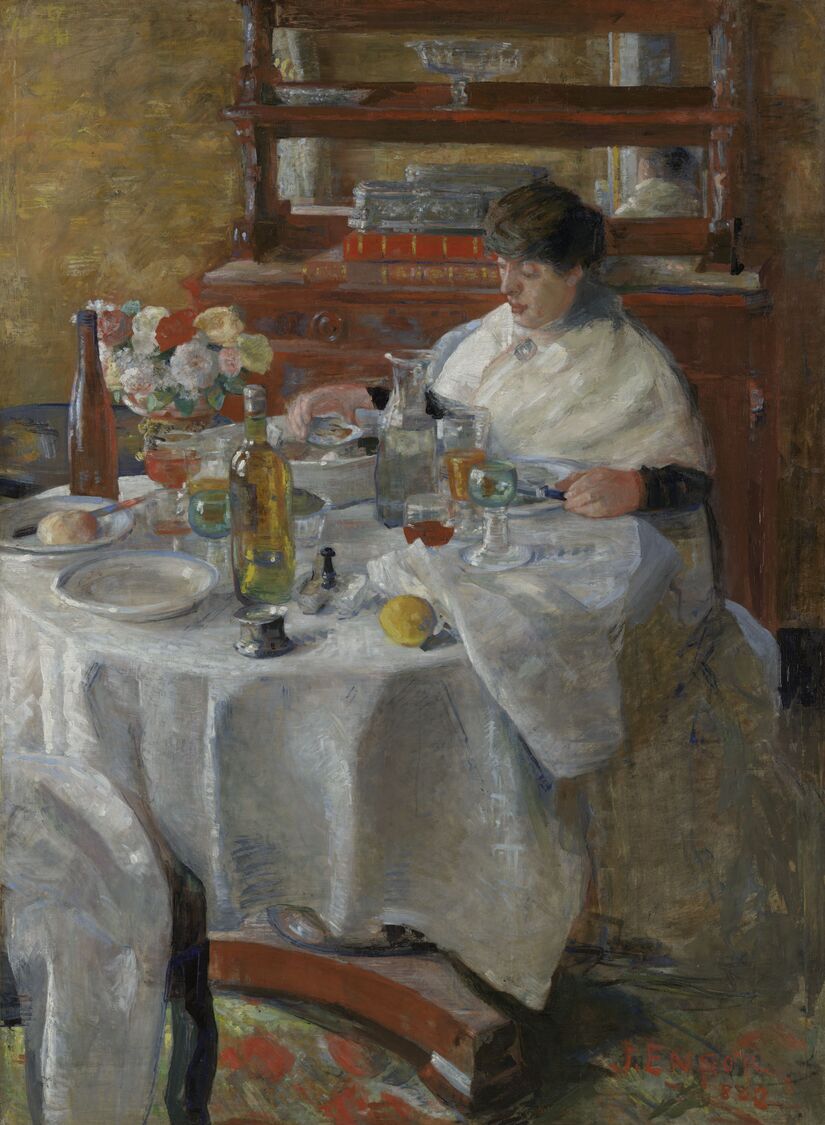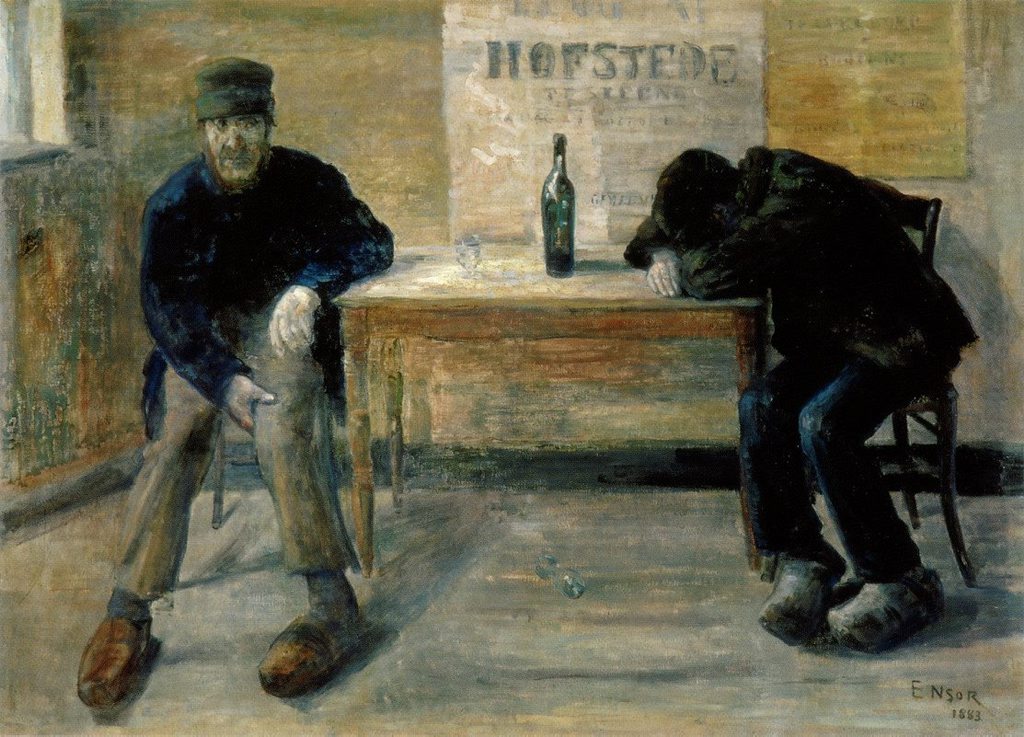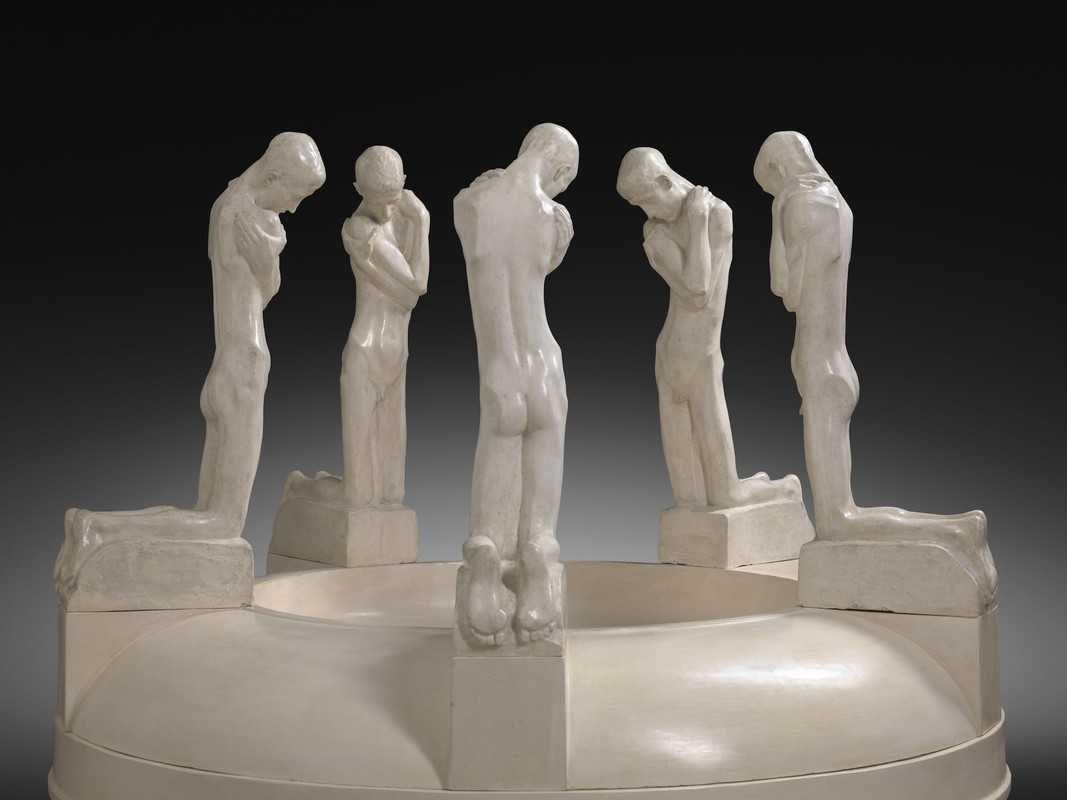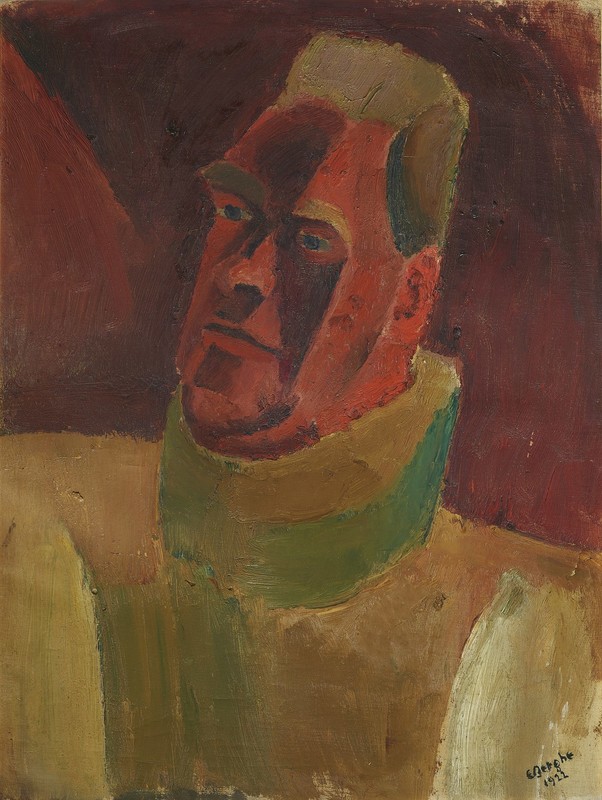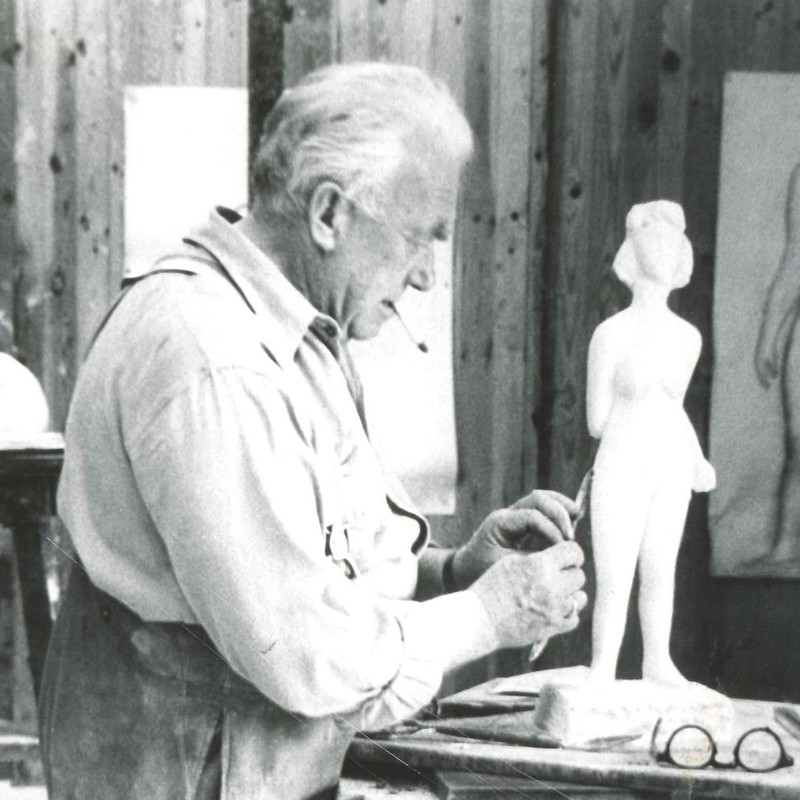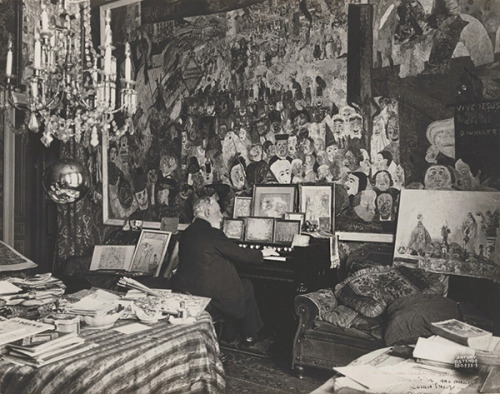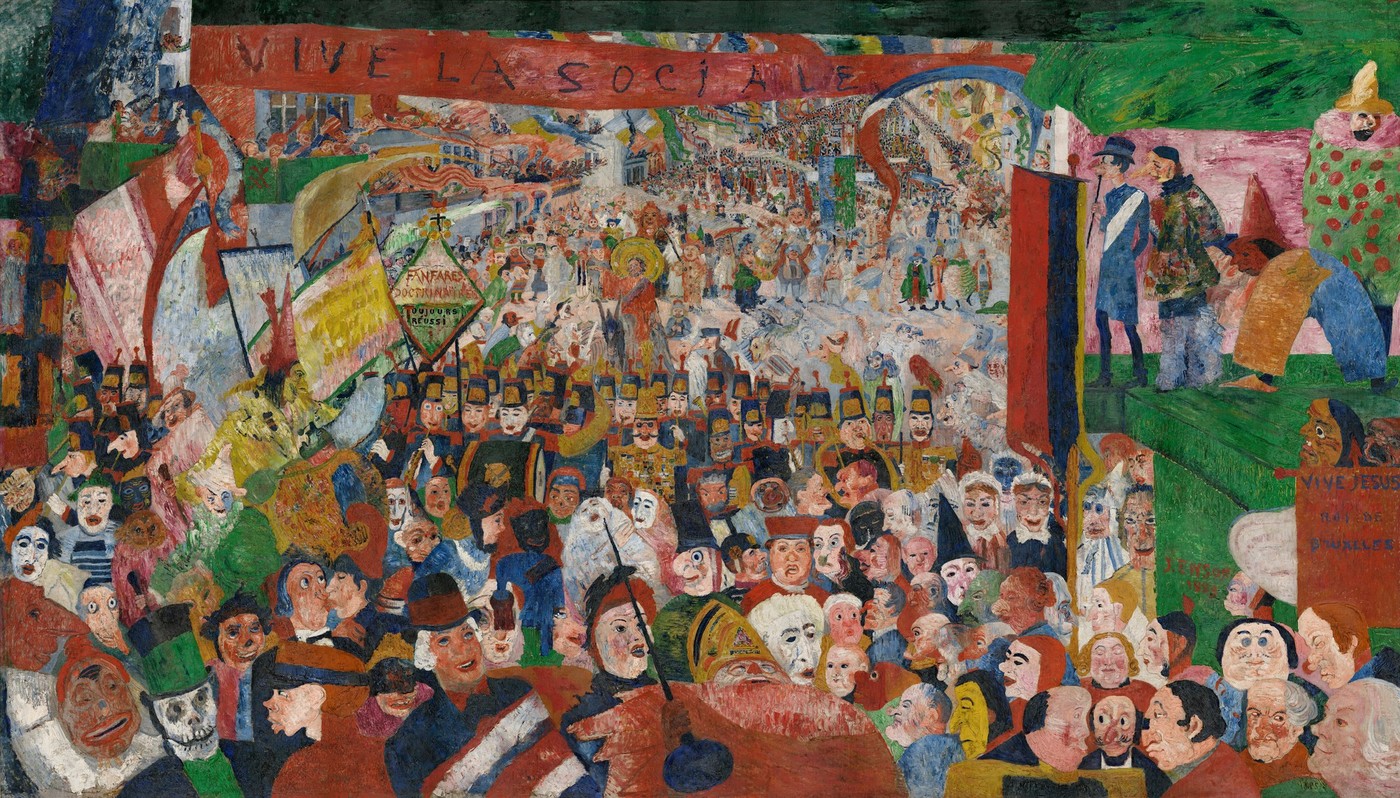
James Ensor, Christ’s Entry into Brussels in 1889, 1888-1899 | Los Angeles, J. Paul Getty Museum
Christ’s Entry into Brussels in 1889 by James Ensor
Innovation in the Visual Arts
Christ’s entry into Brussels in 1889 is the most ambitious work of the Ostend artist James Ensor (1860-1949). The painting illustrates the new course taken by Belgian art at the end of the 19th century.
The quality of renewal resided in the manner of painting: bright, expressive colours, simplified forms and figures. But also the iconography and the critical message were revolutionary for their time. In this monumental work Ensor interpreted the entry of Christ into Jerusalem, a Biblical story that everyone knew in the Catholic Belgium of those days. He transposed the story to Brussels and presented the entry as a carnival parade with clowns, skeletons and masked figures, a symbol of human hypocrisy. Banners with slogans like ‘vive la sociale’ refer to the struggle of the workers’ movement at the time for more rights. In the centre, depicted small, is Jesus. Ensor was fond of identifying with that figure, since Jesus, like himself, was misunderstood by the masses. With this painting Ensor became one of the precursors of Expressionism. Like Edvard Munch and Vincent van Gogh.
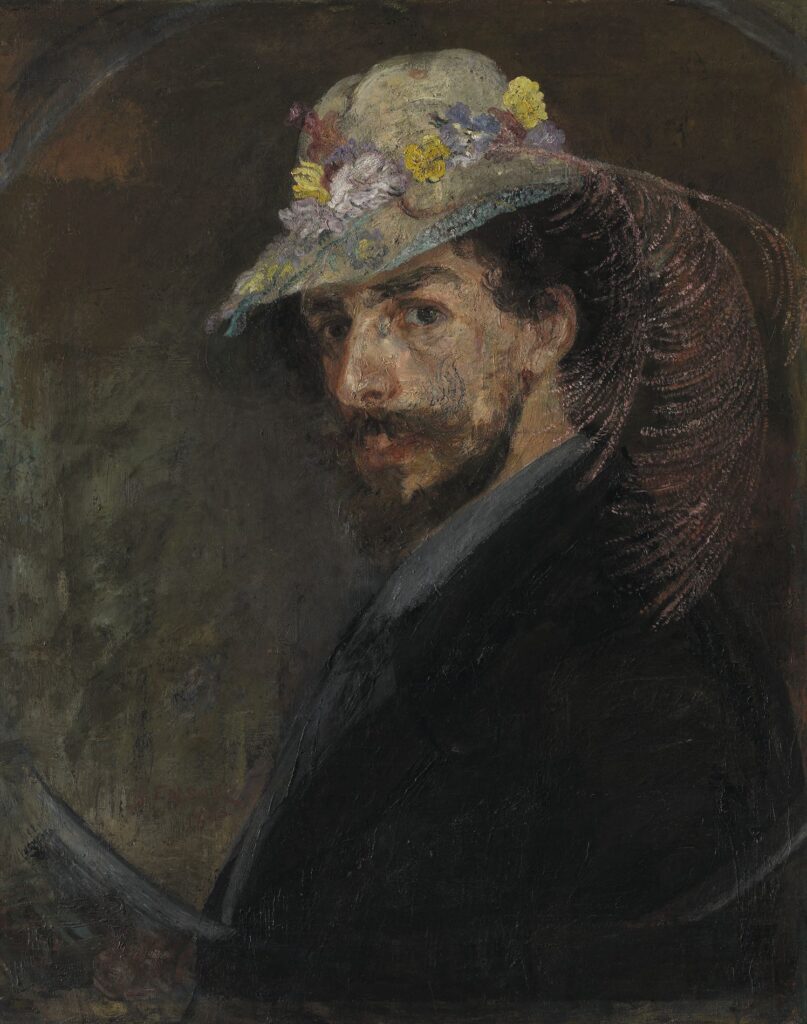
Ostende, Mu.ZEE
James Ensor, Self-Portrait with Flowered Hat, 1883.
Innovation in the Visual Arts
In the second half of the 19th century the Belgian art world was divided. Established artists like Gustaaf Wappers and Nicaise De Keyser painted scenes that glorified Belgian history. Their style was inspired by famous predecessors like Peter Paul Rubens and was characterised by clearly delineated shapes, idealised figures and harmonious compositions.
James Ensor from Ostend was the son of an English father and a Flemish mother. He was part of a generation of internationally orientated artists who were searching for a different visual language. Realists wanted to present life as it was. Impressionists experimented with light and colour. With Symbolists emotion, expression and spirituality were central. Precursors of Expressionism wanted mainly to express a feeling, with simplified forms and lively colours. In Ensor’s work elements of all those movements can be found.
Paris was the European centre of artistic renewal, but Brussels also attracted foreign artists. Supporters of artistic freedom, like Ensor, Fernand Khnopff and Théo Van Rysselberghe, gathered in artistic circles like Les XX. They organised their own exhibitions, away from the official shows where their work was often not welcome. They were surrounded by writers and intellectuals who in magazines like L’Art moderne defended the renewal in art. The progressive urban elite bought their work and supported artists financially.
Focal points
Discover more on this topic
Non-fiction
Over Permeke. Met de klankkleur van een basviool
Oostende, Venetiaanse Gaanderijen, 2020.
De intrede van Christus in Brussel in 1889
Ludion, 2010.
Les Vingt en de avant-garde in België: prenten, tekeningen en boeken ca. 1890
Pandora, 1992.
De nieuwe morgen: impressionisme, symbolisme en expressionisme in Vlaanderen
Lannoo, 2018.
Hareng Saur: Ensor en de hedendaagse kunst
Ludion, 2010.
Van Rik Wouters tot René Magritte: fauvisme, expressionisme, abstractie en surrealisme
Lannoo, 2007.
Dit is België, in tachtig meesterwerken
Athenaeum-Polak en Van Gennep, 2010.
Emile Claus & het landleven
Museum voor Schone Kunsten Gent/Mercatorfonds, 2009.
Moderne kunst in België
Mercatorfonds, 1992.
Vlaams expressionisme in Europese context. 1900-1930
Snoeck-Ducaju, 1990.
Van realisme tot symbolisme: De Belgische avant-garde 1880-1900
Ludion, 1994.
Vlaamse kunst van de oorsprong tot heden
Mercatorfonds, 1991.
James Ensor. Een biografie
Meulenhoff/Manteau, 2008.
Van Ensor tot Magritte: Belgische kunst 1880-1940
Lannoo, 2002.
De schilderkunst der Lage Landen. De negentiende en de twintigste eeuw
Amsterdam University Press, 2007.
Het volk ten voeten uit. Naturalisme in België en Europa
Ludion, 1996.
Ensor ontmaskerd
Mercatorfonds, 2010.
Oer: de wortels van Vlaanderen
Lannoo, 2017.
Constant Permeke
Mercatorfonds, 2012.
Op reis met Vlaamse meesters: vijftig ‘schilderachtige’ plekken vroeger en nu
Davidsfonds Uitgeverij, 2019.
Fiction
Het geheim van Fernand Khnopff
Kate’art Editions, 2004.
Ensor: de grote maskerade
Leopold, 2015. (3+)
James Hond en de Zwarte Vorst
Van Halewyck, 2019. (9+)
De boer die sterft
Davidsfonds, 2004.
